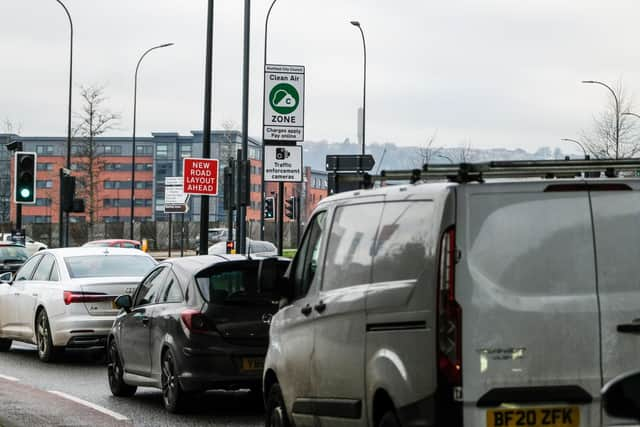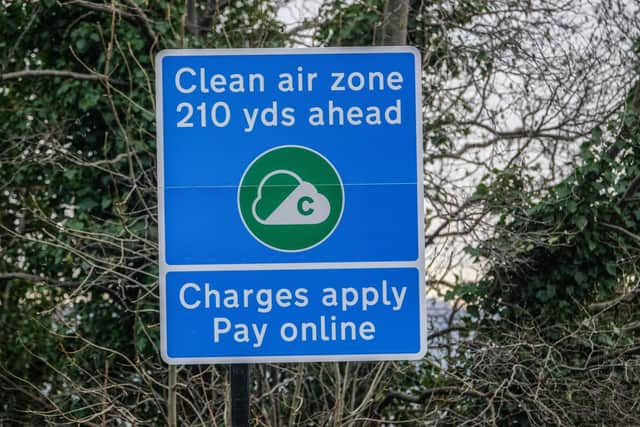Clean Air Zone Sheffield: Public health boss explains the positives
and live on Freeview channel 276
Whilst the introduction of the CAZ has required some adjustment for many of us, the evidence is clear, when it comes to air pollution, there is no safe limit and, with one in 20 deaths in Sheffield attributable to air pollution, we must all act to protect the health of ourselves, our loved ones, and the environment around us.
A year on living with the CAZ and we are seeing the kind of positive results we were hoping for.
Advertisement
Hide AdAdvertisement
Hide AdThe number of polluting vehicles within the CAZ boundary has seen a huge drop compared to the year before – two thirds of a reduction, or 64 per cent to be precise.


Data also shows that the polluting traffic around the boundary has also dropped by 18 per cent – suggesting that more and more people are making the switch to cleaner vehicles.
So, what does this mean for the health of local people who live, work and study in those poor air quality hotspots?
Air quality impacts our health and can lead to life-changing diseases.
Advertisement
Hide AdAdvertisement
Hide AdThis assault on the health begins in the womb from the first few weeks of pregnancy and impacts the development of an unborn child.


Long-term improvements to air quality and a sustained reduction in exposure to harmful pollutants will reduce life-threatening diseases – such as lung cancer, stroke, and asthma – reduce pressure on health services and improve the health and livelihoods of future generations.
We often get asked, where is the latest data proving that poor air quality causes deaths in Sheffield?
The simple answer is, getting the data on how many people die as a result of breathing in poor air quality isn’t simple.
Advertisement
Hide AdAdvertisement
Hide AdThe published medical evidence on the impact pollutants have on our health is compelling and continues to mount.
This was most helpfully summarised by the World Health Organisation in 20215, and in the England Chief Medical Officer 2022 report.
The way we think about the impact of air quality needs to be considered.
Just because we can’t see it or attribute it directly to cause of death or illness, it doesn’t mean that it’s not a very real threat.
Advertisement
Hide AdAdvertisement
Hide AdTake smoking for example. It wasn’t until the 1950s that research was published proving that smoking cigarettes led to serious life-threatening illnesses and death.
Prior to this, due to a mix of glamorising advertising campaigns and a lack of tangible research to suggest otherwise, the notion was disputed, with many actually believing that smoking was good for you!
Today, with the appropriate awareness campaigns and government support, we as a society are well aware of the impacts of smoking on the health, as well as the equally negative impacts of passive smoking. Hence why we are seeing a year-on-year decline in the number of smokers across the UK.
We no longer see smoking in public buildings or in cars with children, and new laws are continually introduced to reduce accessibility and desirability of cigarettes.
Advertisement
Hide AdAdvertisement
Hide AdThere are many who have estimated that the levels of air pollution in many cities is equivalent to smoking cigarettes.
But even now, you will not see ‘smoking’ listed as a cause of death or illness. The same can be said for poor air quality.
Just like the change in behaviour and awareness we are seeing towards smoking, Clean Air Zones across the UK and London’s ULEZ encourage us all to rethink the wider health implications of the way we travel and, with road transport responsible for 80 per cent of roadside NO2 pollution, we all have a responsibility to change.
Let’s consider Amsterdam in the Netherlands, it wasn’t always one of the most walking- and bicycle-friendly cities in the world. But, after decades of hard work, in the late 1970s real change for cycling policies and pedestrian and bike-friendly streets started to be introduced.
Advertisement
Hide AdAdvertisement
Hide AdWhen we look at the impact switching to cleaner and more active modes of travel has made in the Netherlands, the results speak for themselves.
Cleaner and active modes of travel mean better air quality and improved health and wellbeing for the population.
Closer to home, we are seeing real impact that the switch to walking and cycling can make.
In London, cycling infrastructure, coupled with the ULEZ, is driving down air pollution and is allowing more and more Londoners to take up cycling.
Advertisement
Hide AdAdvertisement
Hide AdLatest figures show that weekday bike trips in London are up 20 to 25 per cent, when March 2020 is compared with October 2022, while there has been a 90 per cent increase in cycling at the weekend.
In the city centre, we’re working on transport schemes which will improve our infrastructure for walking, wheeling and cycling. Wider footways, new connected cycle routes and improved facilities for bus users, enabling more people to make car-free journeys.
By providing more choice in how you travel, we hope to reduce people’s reliance on the car for shorter trips. This, in turn will reduce congestion, make public transport more reliable, and free up space on the road for people who need to travel by car.